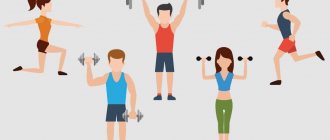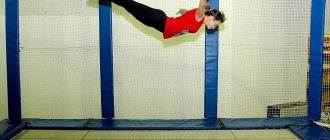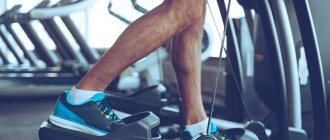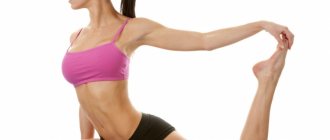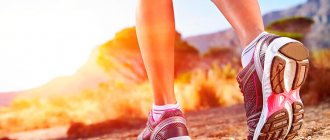How does temperature affect
Water temperature has a direct impact on losing extra pounds. The pools are mostly heated, so the water temperature reaches up to 29 degrees. This is very comfortable, but not as effective for weight loss as we would like. After all, such comfortable water will not require any extra expenditure of energy; it will relax and unwind. Therefore, it is worth remembering that the effectiveness of weight loss exercises is achieved at 26-27 degrees. Unplanned expenditure of energy to maintain temperature forces the body to waste fat resources, and it simply “melts”.
Swimming: burn calories in the pool in 30-45 minutes, in 1 hour
Crawl swimming maximally loads the back muscles, improves shape, and corrects posture.
The average person weighing about 70 kg burns calories as follows:
| Swimming style | Costs for 30-45 min. (kcal) | Costs for 60 min. (kcal) |
| Breaststroke | 310 | 600 |
| Crawl on chest | 409 | 615 |
| Back crawl | 298 | 350 |
| Butterfly | 409 | 700 |
Which is better: a river or a pool?
In the pool, conditions are always maintained artificially. They are stable. Temperature, the presence of standing chlorinated water, a warm microclimate, safety and the presence of instructors - all this makes visiting the pool safer, and therefore better.
However, the water in the pool is too warm, such comfort does not contribute to burning calories as much as we would like. Fresh air also makes you lose calories faster than the stuffy atmosphere in the pool.
Therefore, swimming in the river is an order of magnitude more effective; in addition to the cool temperature, the depth of the current and the increased requirement for control play a role. The body gets tired more and loses weight, plus additional costs for heating.
Water in the sea has a higher density than in a river, and it is easier to float on sea water. But the waves and deep currents are stronger there, so training at sea is much more effective. Moving with the current is always less effective; additional calories are spent fighting the current.
Calorie consumption depending on body type
A person's body type, or structure, directly affects the rate of weight gain and calorie consumption when swimming. There are three main body types: endomorph, mesomorph and endomorph.
Ectomorph. How much kcal should you consume per kg of body?
The almost complete absence of subcutaneous fat makes the ectomorph’s figure angular and thin. These people have long arms and legs, narrow shoulders, and a short torso. People with an ectomorphic body type manage to burn calories 5-7% faster than others. Ectomorphs usually face the question not of losing weight, but of gaining muscle mass. The required amount of calories is calculated based on the person’s weight: weight (kg)*45 kcal.
Mesomorph. How much kcal should you consume per kg of body?
Mesomorphs are physically strong people with a long body, broad shoulders and muscular limbs. People with this type of structure have a fairly active metabolism. The required daily amount of calories for a mesomorph can be calculated using the formula: weight in kg * 30. If you exercise regularly, supplement your daily intake with 200-350 kcal.
Endomorph. How much kcal should you consume per kg of body?
The endomorph figure is characterized by large fat deposits in the waist and hips. People with this type of figure are characterized by a rounded body, short neck and round face. Calories are burned slower than others, by 6-8%. Calories for endomorph weight loss are calculated using the formula:
40 kcal * desired weight * activity level (1-1.5) = number of kcal.
To lose weight of any body type, it is important to consume fewer calories than you burn in the pool when swimming.
Next, we will consider the effect of swimming styles on the figure depending on the intensity of training and the person’s weight.
Compliance with water safety regulations
Swimming in ponds requires special care, so you need to remember safety precautions. Signs prohibiting swimming, the topography of the bottom, the presence of broken glass and other debris in the water - all this should be in the attention zone of swimmers. It is advisable to choose reservoirs that are not remote, so that in case of trouble, help will come.
You cannot go to exercise on a full stomach, because, firstly, it will be very difficult to move, and, secondly, it is not good for digestion.
You need to remember that river and sea water does not warm up above 25 degrees, so there is a risk of getting a sudden leg cramp. This happens especially often when swimming in a lake, since lake water is much colder than river water. If seizures occur, it is better not to swim in the lake, or to swim accompanied.
Calorie consumption when swimming butterfly
Since butterfly is one of the most energetic swimming styles, it is the most effective for losing weight. However, for those new to swimming, the technique of this style will seem difficult. If you have mastered the crawl and breaststroke, feel free to start learning the butterfly technique in your training plan. The high pace of swimming with this style allows you to get rid of 550-880 extra kcal in one hour of swimming in the pool. This figure is close to that of strength fitness.
At a slow pace and low intensity of exercise, calorie losses average 380-760 kcal.
If you visit the pool for the purpose of losing weight, focus not on the time it takes you to swim 100 m, but on your well-being and the time spent in the water.
Training system
How should you train to lose weight in a short time? The maximum result is achieved if training is not interrupted, regardless of the season. And a few more factors:
- Training should be at least 1 hour and at least 2 or 3 times every 7 days.
- To burn fat, a rapid heart rate (130 and above) is desirable.
- Lowering the water temperature dramatically increases calorie consumption.
- Training should not be less than 1 hour or more than 3 hours, however, a half-hour swim will have results.
- Exhausting workouts will bring harm, not benefit: the exhausted body will make up for lost time with new portions of food.
- During training, an instructor is desirable: he will help regulate movements, breathing, and teach how to combine styles. In addition, it is guaranteed safety.
- Alternating loads are useful: combining styles, pace, changing the pool to swimming in the river. The body gets used to one type of load, and efficiency decreases.
- During training, the body rapidly loses not only calories, but also water. To avoid critical dehydration, you must not eat after training for at least 2 hours, only drink water.
- It is better to give preference to back crawl and butterfly, since these are the styles that are the most energy-consuming.
- Interval training gives very good results. If you swim 30 seconds in the backstroke and 15 seconds in the breaststroke.
- Rowing technique is no less important, since incorrect technique affects the result. The same can be said about proper breathing.
- For beginners, it’s better to start with “baby” floundering, which helps you lose up to 250 calories. Then, once you get used to it, you can increase the load by choosing the lightest styles. Beginners are recommended to use no more than 2-3 styles in one lesson.
Swimming gives excellent results: with constant training, it is easy to achieve an excellent figure and quickly lose calories. The main condition: regularity, which, in combination with the tips given above, will help you achieve stunning success.
Averages
For those who need a quick answer and don’t really want to delve into detailed tables, I will give here the arithmetic average.
If you are a swimmer weighing 70 kilograms and during training you swim in equal parts crawl, breaststroke and backstroke (we don’t take butterfly, in general about styles, see the comments below), then you will get the following results:
30 minutes of continuous sports swimming consumes 360 kcal.
630 kcal are spent in 1 hour of continuous sports swimming. An hour of training with a warm-up, cool-down and short rest breaks will, accordingly, spend about 400 - 500 kcal.
I calculated these data based on the studies cited below. There you will also find indicators for different body weights and styles.
How accurate are the numbers?
People who are significantly overweight will “give away” much more kilocalories, since they need more strength in order not to sink and move.
If the water is warm and pleasant enough, the calories will “go away” reluctantly - you need to leave your comfort zone. To warm up in water, the body will spend more energy, quickly part with not only the calories received during meals, but also begin to “unlock reserves.”
Of course, the principle - the longer, the better - is known to everyone, but do not forget that overload is harmful, especially for those who are just beginning to learn the basics of regular swimming. But you should swim for at least a third of an hour - it is after so many minutes that the body begins to intensively “give off” calories.
Each swimming style provides its own degree of stress. Breaststroke and crawl require the most effort. For example, when asked how many calories are burned in 45 minutes of swimming, there may be several answers. Someone who weighs 70 kg or a couple of kilos more will burn about 600 Kcal in forty-five minutes of water butterfly movements, and if such a swimmer chooses breaststroke, he will spend 565 Kcal.
A few more striking examples in numbers:
- with a weight of 60 kg, 496 Kcal are spent per hour of swimming, and with 90 kg, in the same period of time, 730 Kcal will “disappear” from the body - these are the most common numbers that experts call when explaining how many calories are burned in an hour of swimming;
- easy balancing on the surface with leg movements takes 260 Kcal per hour;
- if you swim without worrying about style and slowly, you will “go away” 280 Kcal in an hour;
- swimming without haste in a supine position takes 456 Kcal per hour;
- when the swimmer slowly moves in crawl for the time mentioned above, he will spend 520 Kcal;
- an hour of fast breaststroke or freestyle swimming saves the swimmer from 650 Kcal;
- “active” butterfly or crawl during this time will allow you to say goodbye to 716 Kcal.
Don’t forget that conditions will adjust these indicators, and we already have an idea in which direction. But we are talking about how many calories are burned when swimming in a pool, but what about a swimmer’s “walk” in the sea? Does it take more or less energy? In half an hour, the same amount as intense breaststroke or freestyle, that is, 650 Kcal, which is second only to swimming butterfly or crawl. When swimming in the sea, style is no longer so important, but the movements must be very energetic.
Calorie consumption is different for each person. It depends not only on weight and the chosen swimming style (which were taken into account on average in the above tables), but also on many other factors, including:
- Burning calories depends on a person’s individual metabolism - for some it goes faster, for others slower, and there is no direct connection with a person’s weight.
- In addition, within the chosen swimming style, each swimmer has his own movement technique, including his own mistakes. As a result, both the efficiency and energy consumption of movements changes.
For example, a common mistake in freestyle swimming: excessive bending of the legs at the knees instead of working them “from the hips” (see more detailsabout footwork in crawl
).
As a result, there is less stress on the quadriceps - and these are the largest muscles. Accordingly, in the above example, due to incorrect leg movements, swimming will be slower and less efficient, and fewer calories will be burned.
- The level of training, as well as the ratio of muscle and fat in the body, also matters. With the same weight, a person can have a lot of muscle or a lot of fat.
Taking into account the above, the above figures (as, in principle, most calorie calculations) are quite arbitrary.
Calculating calories is an approximate matter!
If you are faced with the task of calculating daily calorie intake and consumption, just in case you can reduce them by 10-20%.
It seems that in this matter it is better to proceed from a more pessimistic scenario and leave a reserve, than to later be upset by the lack of results due to the fact that in reality fewer calories were spent and fewer fat cells left the body.
Useful and negative aspects of classes
Swimming is considered a full-fledged sport, during which all muscle groups are worked out and a lot of calories are consumed. Benefits of intense water exercise:
- muscle tone increases;
- skin tightens;
- the body acquires relief;
- extra pounds go away;
- metabolism improves;
- the musculoskeletal system is strengthened;
- the lungs are developed;
- blood circulation accelerates;
- the work of all internal organs is improved;
- mood improves, nervousness goes away, sleep improves;
- physical and nervous tension is relieved.
All this is possible only with systematic swimming training (at least 2 times a week). This type of physical activity is especially recommended for people with excess body weight, since swimming:
- Creates a gentle load on the musculoskeletal system.
- Allows you to perform exercises of any complexity in water, due to the effect of hydroweightlessness.
- Suitable for people of all ages and physical abilities, including pensioners and disabled people.
- Additionally, it provides hydromassage to the skin.
Swimming in a pool is just as effective as swimming in any open water: rivers, lakes, seas. However, here you may encounter some environmental dangers: pathogenic bacteria, intestinal infections.
Prolonged exposure to very cold water is fraught with hypothermia, decreased immunity and colds. In addition, a change in the functions of the sweat glands occurs, as a result of which the kidneys are overloaded, which promotes the production of red blood cells in the urine. Therefore, no matter how useful swimming is, it should be a controlled and systematic pastime. When training in open waters, you should take into account the temperature of the water and air in order to correctly adjust the duration, intensity and number of swims.
For men
For men, swimming is a kind of cyclic aerobic exercise aimed at training the cardiovascular, nervous and immune systems. This option is ideal for those who do not want to work out in gyms, but want to keep themselves in good physical shape.
Thanks to systematic exercises in water, all muscle groups are worked out, including autochthonous ones, which are responsible for beautiful posture. Due to their deep location, influencing them is problematic, but in an aquatic environment it is possible. In addition, water activities are not as dangerous as on land with sports equipment.
For women
Swimming for women does not require intense physical activity. In most cases, girls visit the pool to relax and tighten their figure a little. Such activities help fight stress and depression, especially when the water temperature is above 27 degrees.
Swimming is recommended even for pregnant women, but at a measured pace. Positive influence:
- improves overall well-being and mood;
- teaches proper breathing techniques, which helps during childbirth;
- normalizes blood pressure;
- makes it easy to dive;
- relieves stress on joints and spine;
- relieves pain in the lower back;
- keep muscles toned;
- does not cause body concussion, which is dangerous in such a position;
- helps to lose weight;
- calms and relaxes.
If you regularly visit the pool for 9 months, then after giving birth you won’t have to spend much time restoring your figure. In just an hour of quiet exercise in water, up to 600 kcal is burned.
Swimming in the sea
Swimming in the sea has advantages over a session in the pool. When you're out at sea, you'll lose more calories just because you don't have a foothold. You will direct all your efforts to stay afloat when the pool always has a side or buoys at hand.
While swimming in the open sea, you will burn at least 400 kcal per hour, and your skin will absorb beneficial microelements contained in salt water. This procedure can replace a massage session in professional beauty salons.

